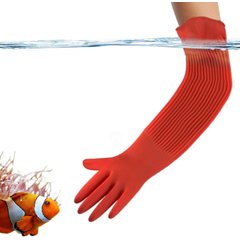Do Turtles Carry Salmonella?
Andrei310/iStock / Getty Images Plus via Getty Images
While turtles can truly be terrific pets, one question continues to crop up: Do turtles carry salmonella?
The short answer is yes—turtles can carry salmonella. However, with hygienic precautions and good care, pet parents can reduce their risk of getting salmonella from turtles.
What Is Salmonella in Turtles?
Salmonella is a bacterium commonly found in the gastrointestinal tract of infected animals and humans. It’s a disease that is classified as zoonotic, meaning it can be transmitted from animals to humans. While many reptiles can asymptomatically carry salmonella, most turtles carry salmonella without signs or symptoms of illness.
Salmonella bacteria are carried in a turtle’s gastrointestinal tract and shed in their feces. Because turtles swim in the water in which they defecate, and often also walk through and lay in areas where feces have been, salmonella bacteria may be present on turtle shells and skin.
Do All Turtles Have Salmonella?
Because the vast majority of turtles asymptomatically carry salmonella, it’s best practice—and safest—to assume that any turtle can transmit the disease. The available testing only detects salmonella shed in the stool at the time of analysis, NOT whether the bacteria is present in the turtle’s GI tract.
While a turtle may appear to be healthy and clean, pet parents should consider any and all turtles to be potential sources of salmonella infection. By taking the appropriate precautions to protect themselves, as well as others who may come into contact with their turtle, pet parents can reduce the risk of infection and safely enjoy cohabitating with their shelled friend.
What Are the Chances of Getting Salmonella from a Turtle?
Every pet comes with its own set of concerns, whether it be bites, scratches, or transmissible diseases. As long as you take some simple precautions when handling, feeding, and cleaning, the risk of acquiring a salmonella infection from a pet turtle is quite low. From 2006–2014, the United States had a total of 15 multistate outbreaks of turtle-associated salmonellosis in humans.
So while it’s important to understand the possible risks of contracting salmonella from turtles and learn how to prevent transmission, reptile-lovers need not despair—for otherwise healthy individuals who observe some extra hygiene practices, turtles make fantastic pets.
How To Prevent Getting Salmonella from Turtles
While the risk of salmonella infection may initially seem alarming, pet parents can take some simple steps pet to drastically reduce the chances of contracting salmonella from their turtle.
Practice Proper Turtle Hygiene
Avoid touching your face and mouth, either via direct contact with the turtle or with unwashed hands, while touching and playing with your pet. Thorough hand and forearm washing with antibacterial soap immediately after holding or touching a turtle is very important and prevents transmission.
Turtles should never be handled in the kitchen, around foods and drinks, or while eating.
Salmonella can be present in a turtle’s water, on their shell, on their skin, and in all parts of their enclosure. This is likely due to fecal contamination. The same precautions apply to any instance of contact with the pet or anything they may have come in contact with in their enclosure. It’s important to always know what the turtle has touched so things can be properly cleaned.
Do not let your turtle free-roam in your home, as this can spread salmonella to surfaces outside their tank.
Supervise Young Children
Because children aren’t always good about handwashing and frequently touch their mouth, eyes, and face, it’s essential to closely monitor their contact with turtles.
While salmonella can produce a relatively mild yet unpleasant illness in healthy adults, young children are an at-risk population that could become severely ill or even die from a significant salmonella infection.
Pet turtles, particularly those with shells smaller than 4 inches long, are not recommended for children less than 5 years of age, adults over 65 years of age, or any individual with a compromised immune system.
Clean Turtle Tanks Effectively
Proper tank maintenance is another way to help minimize exposure risk when caring for a turtle. Frequent cleaning, adequate water filtration, and appropriate substrate replacement can all be extremely effective ways to reduce the likelihood of spreading salmonella bacteria.
Wearing long gloves, using turtle-safe bacteria-eliminating disinfectants and cleaners, and creating a closed system for water changes (performing a water change without touching the water) can help keep pet parents safe when cleaning their turtle’s enclosure.
It’s also important to avoid using kitchen sinks for tank water disposal. Always sanitize the sink and surrounding counter space after any tank water or accessories have been in contact with them.
Having designated towels, buckets, and other cleaning items that are specific to tank maintenance can further reduce the risk of accidental cross-contamination.
Recommended Products
Symptoms of Salmonella from Turtles
While the risk of contracting salmonella from your pet turtle is small given proper handling and cleaning practices, it’s important to know the signs of potential infection in humans.
Symptoms of salmonella infection in humans include:
-
Diarrhea
-
Vomiting
-
Abdominal pain/cramping
-
Low-grade fever
More serious symptoms listed below indicate a need to seek medical treatment:
-
Diarrhea lasting more that three days without improvement
-
Bloody diarrhea
-
Vomiting to the degree that one cannot keep liquids down
-
A fever greater than 102 F
-
Signs of dehydration: low urine output, dry mouth, dizziness
Turtle Salmonella FAQs
Can turtles be treated for salmonella?
Salmonella germs cannot be eliminated from the gastrointestinal tract of reptiles. Attempting to treat the turtles with antibiotics to eliminate the bacteria not only doesn’t work, but it can promote antibiotic resistance in salmonella and essentially make the germs stronger.
What other diseases do turtles carry?
The primary zoonotic diseases that turtles can transmit to humans are salmonella and another bacterial infection known as campylobacter. The symptoms of campylobacter are similar to those of salmonella infection: diarrhea, abdominal pain, and fever. Rarely, the infections can become very severe.
Handwashing as well as cleaning and safety precautions can help minimize the risk of both salmonella and campylobacter bacteria.
Is it safe to have turtles as pets?
Yes. With proper hygiene and safety precautions, it’s safe for healthy adults to keep a pet turtle.



